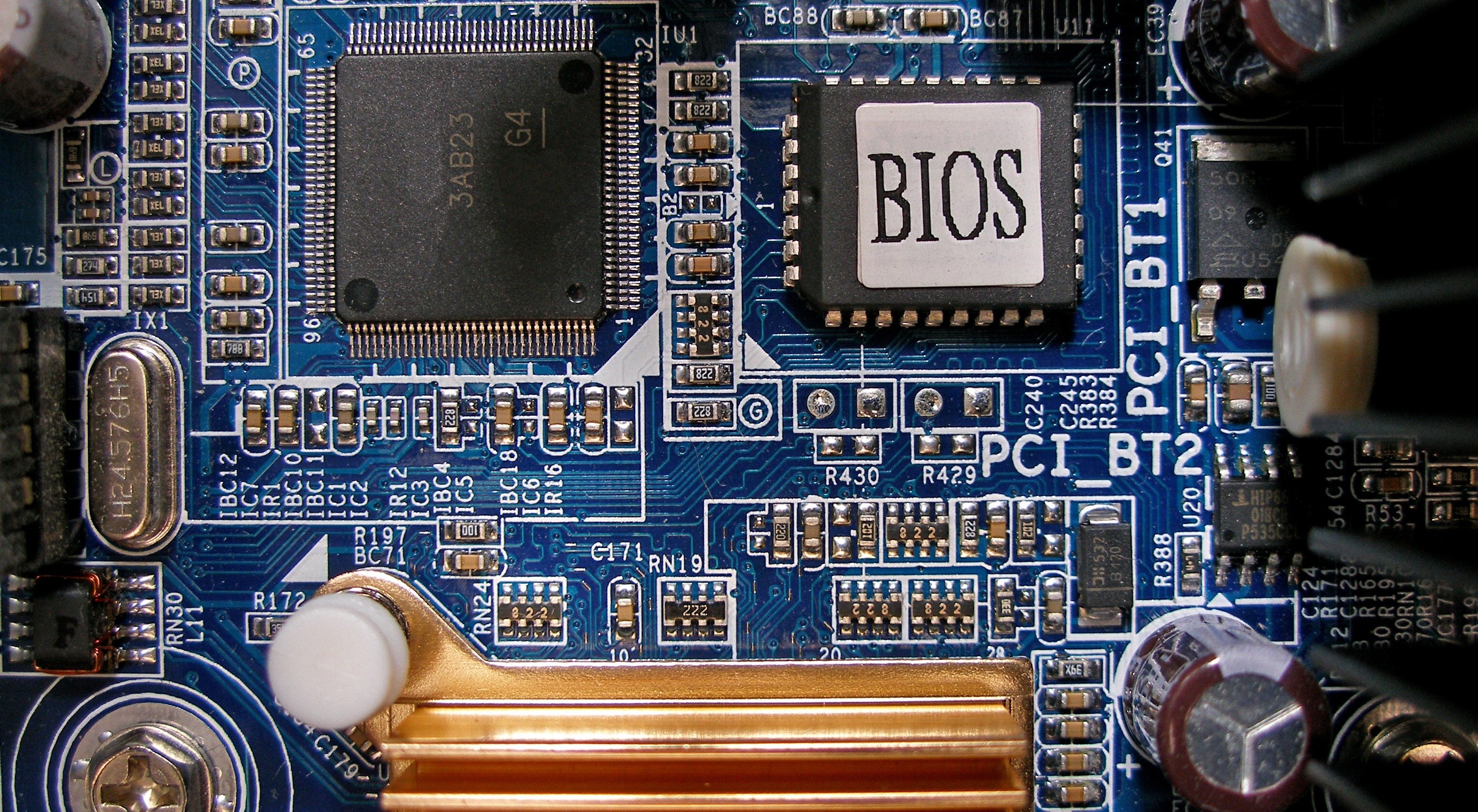Are available and loading the operating system (OS) into the main memory. After startup, the BIOS program manages data flow between the OS and the peripherals, so neither the OS nor the application programs need to know the details of the peripherals (such as hardware addresses).
What does the BIOS do during boot-up?
The BIOS then starts the boot sequence. It looks for the operating system stored on your hard drive and loads it into the RAM. The BIOS then transfers control to the operating system, and your computer has now completed the startup sequence.
What does boot mean in BIOS?
“Boot” is short for “bootstrap,” as in the old phrase, “Lift yourself by your bootstraps.” Boot refers to the process of launching the operating system. The BIOS will try to initiate the boot sequence from the first device. If the BIOS does not find a machine, it will push the next device in the list.
What is needed to boot BIOS?
To access BIOS on a Windows PC, you must press your BIOS key set by your manufacturer, which could be F10, F2, F12, F1, or DEL. If your PC uses its power on self-test startup too quickly, you can also enter BIOS through Windows 10’s advanced start menu recovery settings.
Can I boot from BIOS?
During the initial startup screen, press ESC, F1, F2, F8, or F10. (Depending on the company that created your version of BIOS, a menu may appear.) When you enter BIOS Setup, the setup utility page will appear. Using the arrow keys on your keyboard, select the BOOT tab.
What are the four functions of a BIOS?
The four functions of BIOS Power-on self-test (POST). This tests the hardware of the computer before loading the OS. Bootstrap loader. This locates the OS. Software/drivers. This finds the software and drivers that interface with the OS once running—complementary metal-oxide-semiconductor (CMOS) setup.
What happens when resetting BIOS?
Resetting your BIOS restores it to the last saved configuration, so the procedure can also be used to revert your system after making other changes. Whatever situation you may be dealing with, remember that resetting your BIOS is a simple procedure for new and experienced users.
What are the steps in the boot process?
Although it is possible to break down the boot-up process using a highly detailed analytical methodology, many computer professionals consider it to consist of five significant steps: power on, POST, load BIOS, operating system load, and transfer of control to the OS.

How do I fix BIOS not booting?
If you cannot enter the BIOS setup during boot, follow these steps to clear the CMOS: Turn off all peripheral devices connected to the computer. Disconnect the power cord from the AC power source. Remove the computer cover. Find the battery on the board. Wait one hour, then reconnect the battery.
How do I enter the BIOS setup?
How to enter the BIOS on a Windows 10 PC Navigate to Settings. You can get there by clicking the gear icon on the Start menu. Select Update & Security. Select Recovery from the left menu. Click Restart Now under Advanced startup. Click Troubleshoot. Click Advanced options. Select UEFI Firmware Settings. Click Restart.
Can I change the boot order without BIOS?
If you install each OS in a separate drive, you could switch between both OSes by selecting a different drive every time you boot without needing to get into the BIOS. If you use the save drive, you could use the Windows Boot Manager menu to select the OS when you start your computer without getting into the BIOS.
What is the UEFI boot mode?
What is UEFI boot mode? UEFI boot mode refers to the boot process used by UEFI firmware. During the POST procedure, the UEFI firmware scans all of the bootable storage devices connected to the system for a valid GUID Partition Table (GPT).
How do I select the boot drive in BIOS?
A change to the boot sequence will change the order in which devices are booted. Step 1: Turn on or Restart Your Computer. Step 2: Enter the BIOS Setup Utility. Step 3: Find the Boot Order Options in BIOS. Step 4: Make Changes to the Boot Order. Step 5: Save Your BIOS Changes. Step 6: Confirm Your Changes.
What is the importance of BIOS?
The main job of a computer’s BIOS is to govern the early stages of the startup process, ensuring that the operating system is correctly loaded into memory. BIOS is vital to the operation of most modern computers, and knowing some facts about it could help you troubleshoot issues with your machine.
What does BIOS look like?
The BIOS is the first piece of software your PC runs when your turn it on, and you usually see it as a brief flash of white text on a black screen. It initializes the hardware and provides an abstraction layer to the operating system, freeing them from having to understand the exact details of how to deal with devices.
What is the purpose of BIOS?
BIOS, in full Basic Input/Output System, is a computer program that is typically stored in EPROM and used by the CPU to perform startup procedures when the computer is turned on. Its two major methods are determining what peripheral devices (keyboard, mouse, disk drives, printers, video cards, etc.).
How long does it take for BIOS to reset?
In general, the CMOS jumper is three pins located near the battery. In general, CMOS jumper has positions 1–2 and 2–3. Move the jumper from the default position 1–2 to position 2–3 to clear CMOS. Wait 1–5 minutes, then move it back to the default position.
Is clearing CMOS safe?
Clearing the CMOS should always be performed for a reason – such as troubleshooting a computer problem or removing a forgotten BIOS password. There’s no reason to remove your CMOS if everything is working properly.